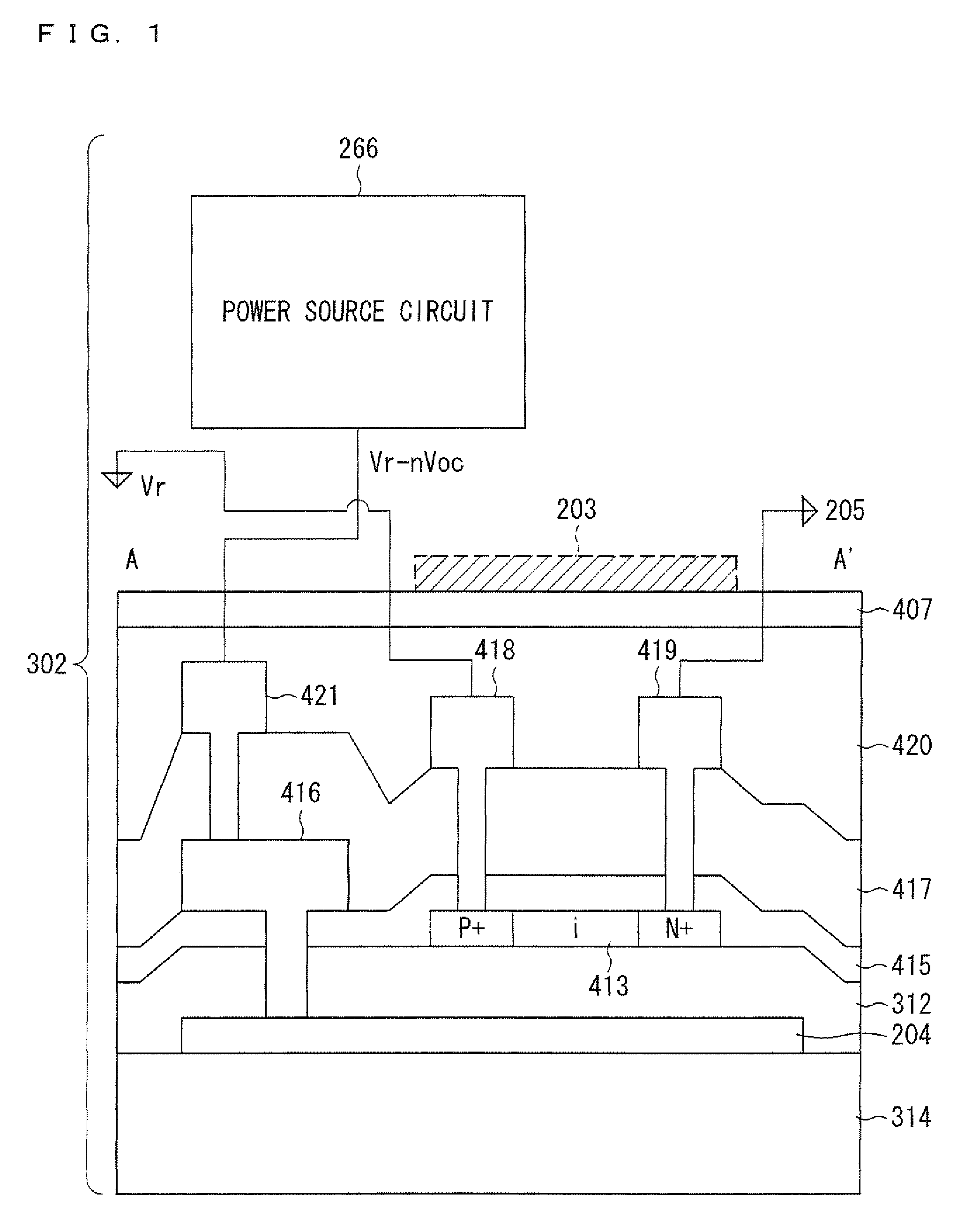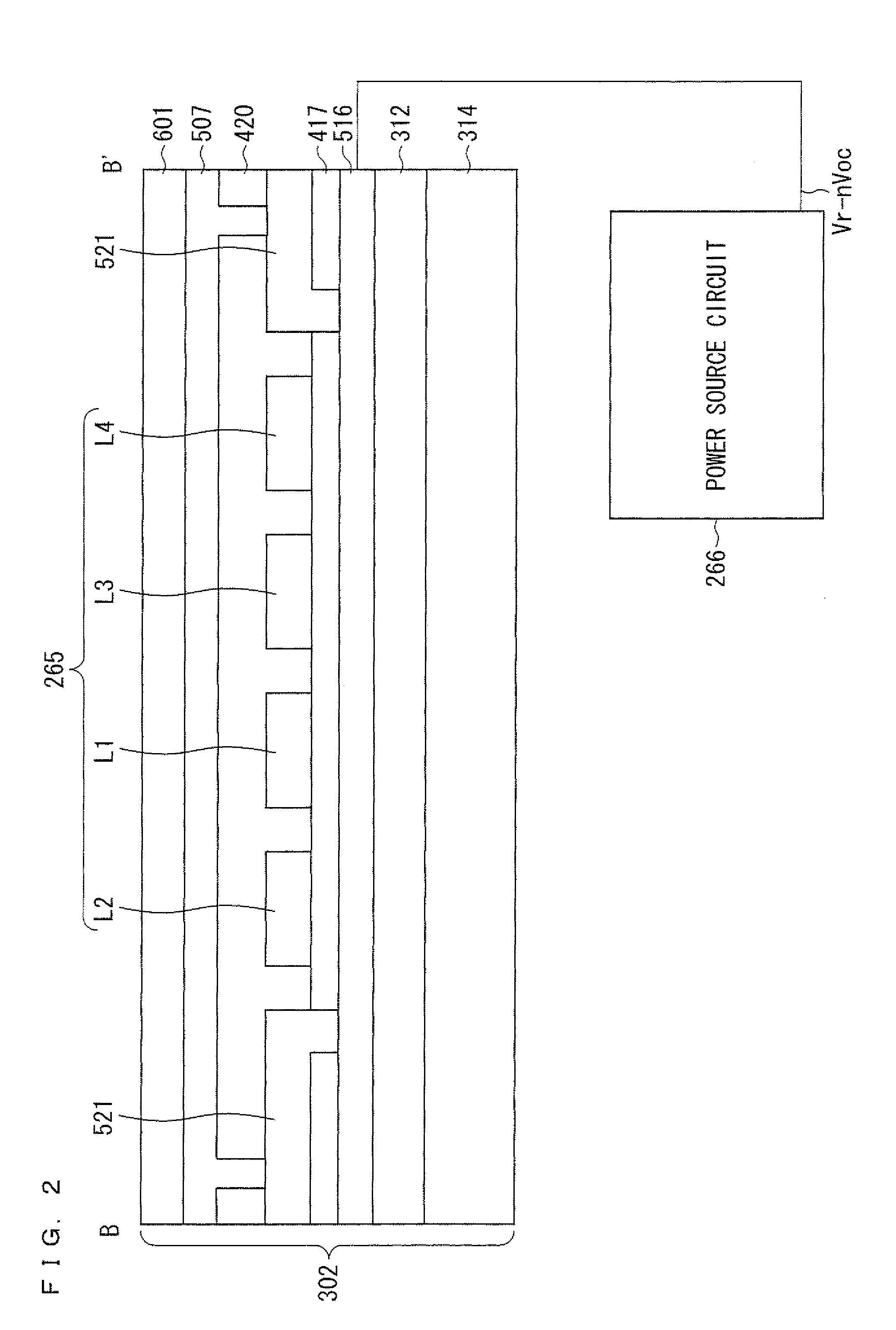Display device
a display device and display technology, applied in the field of display devices, can solve the problems of difficult stabilization of differential current i, difficulty in accurately corresponding to ambient light intensity, etc., and achieve the effect of accurately detecting ambient light intensity and reducing the error of ambient light detection
- Summary
- Abstract
- Description
- Claims
- Application Information
AI Technical Summary
Benefits of technology
Problems solved by technology
Method used
Image
Examples
Embodiment Construction
[0135]One embodiment of the present invention is described below with reference to FIG. 1 through FIG. 7, and FIG. 22.
[0136]FIG. 3 shows a liquid crystal display device 1 according to the present embodiment.
[0137]The liquid crystal display device 1 is realized by modifying the liquid crystal display device 250 illustrated in FIG. 14 in such a manner that (i) the layout and the respective configurations of the detecting device (first photoelectric conversion device) 201 and the reference device (second photoelectric conversion device) 202 of the ambient light sensor are changed, (ii) the configuration of the wiring 265 including the wiring connected with the detecting device 201 and the wiring connected with the reference device 202 is changed, and (iii) a power source circuit 266 is additionally provided. A pixel configuration of a matrix display section 261 is the same as that illustrated in FIG. 15.
[0138]FIG. 4 shows a configuration of an ambient light sensor of a liquid crystal d...
PUM
 Login to View More
Login to View More Abstract
Description
Claims
Application Information
 Login to View More
Login to View More - R&D
- Intellectual Property
- Life Sciences
- Materials
- Tech Scout
- Unparalleled Data Quality
- Higher Quality Content
- 60% Fewer Hallucinations
Browse by: Latest US Patents, China's latest patents, Technical Efficacy Thesaurus, Application Domain, Technology Topic, Popular Technical Reports.
© 2025 PatSnap. All rights reserved.Legal|Privacy policy|Modern Slavery Act Transparency Statement|Sitemap|About US| Contact US: help@patsnap.com



